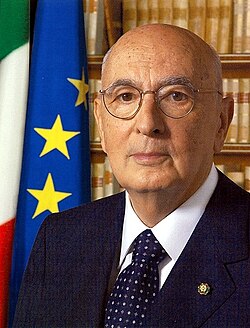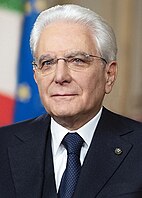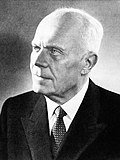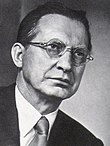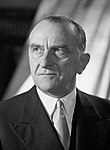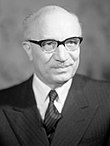- Top left: Enrico De Nicola was the first president of the Italian Republic.
- Top right: Antonio Segni was the first president to resign from office.
- Bottom left: Giorgio Napolitano was the first president to be re-elected.
- Bottom right: Sergio Mattarella is the current president of the Italian Republic and the longest-serving president in Italian history.
The president of Italy (Italian : Presidente della Repubblica) is the head of state of the Italian Republic. Since 1948, there have been 12 presidents of Italy.
Contents
- Election
- Presidents of the Italian Republic (1948–present)
- Timeline
- Substitute of the head of state
- See also
- Notes
- References
- External links
The official residence of the president is the Quirinal Palace in Rome. Among the Italian presidents, three came from Campania (all from Naples), three from Piedmont, two each from Sardinia (both from Sassari) and from Tuscany, one from Liguria, and one from Sicily. No woman has ever held the office.


